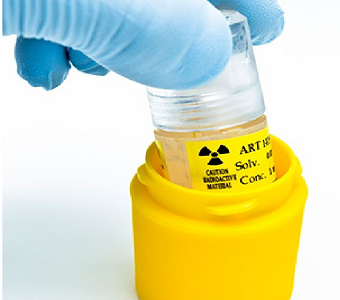Ironwood Pharmaceuticals (IRWD) reported financial results for the fourth quarter and full year 2013 on Tuesday morning. We’re interested primarily for the read-through on Synergy Pharmaceuticals (SGYP) – catch up on our previous coverage of Synergy here and here.
Although shares of Synergy initially reacted negatively, we believe the market had it wrong – Ironwood’s improving launch is a good sign for Synergy – and we’re again buyers around $5.50. The unexciting Linzess sales growth, until now, was the overhang on SGYP; but with a phase 2b read-out in less than four months and Linzess ramping well, SGYP should continue to trend higher.
Total Linzess sales reported by Ironwood’s partner Forest Labs (FRX) came in at $51 million for 4Q, up 48% quarter-over-quarter. In 2013, Linzess ‘ first full year on the market, the drug generated sales of $118.8 million. Most importantly, and the reason IRWD climbed 16% through the session, is that Linzess sales numbers appear to be headed towards the blockbuster figures that Wall Street has touted since the drug’s approval in August of 2012 for IBS-C (Irritable bowel Syndrome with constipation) and CIC (Chronic Idiopathic Constipation). We explained the relationship in more detail, here.
Linzess (linaclotide) is a guanylate cyclase-C (GC-C) agonist. This class of drugs promotes secretion of chloride and bicarbonate, along with water, in the intestine. Proper regulation of fluids in the bowel improves the symptoms of CIC and IBS-C. Synergy develops plecanatide, a novel GC-C agonist that appears to be significantly more tolerable than Linzess. Diarrhea is a common issue for patients on Linzess, thus an alternative with similar efficacy and an improved side effect profile should cannibalize on Linzess sales. In addition, Forest/Ironwood’s marketing efforts make Synergy’s future commercialization campaign that much simpler.
Ironwood, despite receiving only ~45% of the Linzess’ economics (Forest and ex-U.S. partner Almirall take the rest), is valued at $1.3 billion. The market is essentially valuing Linzess at $2.6B considering that Ironwood’s current valuation is based on only half of the Linzess economics. Synergy is a $510M company. Assuming that plecanatide, as a novel GC-C agonist, continues to demonstrate an improved profile, the valuation gap between IRWD and SGYP should continue to close.
On December 24, Synergy announced that it has closed patient enrollment in the plecanatide phase 2b trial in irritable bowel syndrome with constipation (IBS-C). Synergy anticipates reporting topline data from the study in the beginning of the second quarter of 2014. Last year, Synergy was guiding for a read-out in the first quarter; regardless, the announcement set off a run in the stock in December, and SGYP is back to trading in the $5.50 range. Note that SGYP priced a secondary offering last April at $5.50, which we called a buying opportunity at the time – $5.50 remains an attractive point for those who have not yet stepped in, and we remain optimistic about the results of the phase 2b IBS-C trial in the second quarter. We also note that Synergy expects to have results from the phase 2 opioid-induced constipation (OIC) study of its 2nd-generation GC-C agonist, SP-333, in the second quarter.
Although we estimate SGYP ended the year with just under $70 million in cash/equivalents, Synergy will likely raise money in 2014 given that the company is running two large, expensive plecanatide CIC trials (2,700 patients in aggregate) concurrently. As we’ve written before, a partnership could offset the need for more cash. We would expect either to materialize after the plecanatide IBS-C data, at the earliest.
Again, PropThink discussed SGYP, plecanatide, and IRWD in much more detail here and here.
In connection with SGYP, PropThink has taken a long position.




